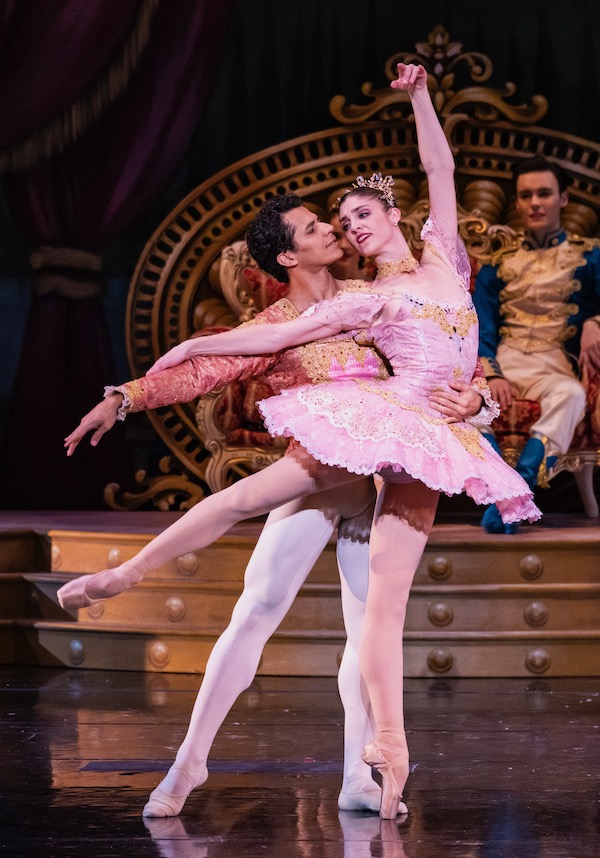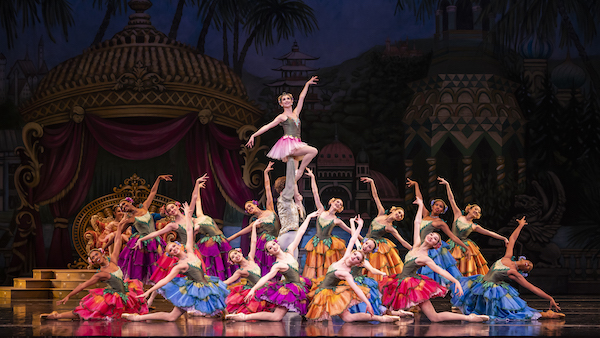Ballet West’s spirited “Nutcracker” returns for a welcome revival

WASHINGTON. Nutcracker season is upon us. The Kennedy Center has taken to presenting its sumptuous performances of the Tchaikovsky favorite over Thanksgiving weekend, with a different American company invited each year in a pleasing rotation of different productions.
This year, Utah’s Ballet West made its fourth trip to the Opera House with its storybook staging, based on the first complete Nutcracker in the United States, choreographed by Willam F. Christensen.
Seen at the Sunday matinee performance, this visit offered a second chance to take in the $3 million renovation of this beloved ballet from a few years ago, last seen in Washington in 2018. The Victorian-era costumes (designed by David Heuvel) still look lavish and colorful, especially the vivid dreamscapes of the Act II divertissement. Updated projections (credited to Mike Tutaj and Paul Deziel) play tricks on the viewer, seeming like painted sets that then move with curls of smoke and other effects on scrims. A puppet show even introduces the second act.
The grand pas de deux of Act II, the main dance attraction of the show, was in good hands with the Sugar Plum Fairy of Jenna Rae Herrera, a lithe, radiant dancer appointed to principal artist two years ago. Her youthful Cavalier, Jordan Veit, is another recently promoted principal dancer, with elegant lines and strong leaps. Amy Potter, who grew up in Virginia, proved an equally graceful Snow Queen at the end of Act I, surrounded by the snowball-carrying corps.
This Nutcracker is an ensemble undertaking, of course, with a large number of dancers rotating through two casts to share the load. Emily Adams and Hadriel Diniz, the Sugar Plum Fairy and Cavalier in the other cast, were equally beautiful in the Waltz of the Flowers in this one. Tyler Gum and Olivia Gusti seduced languidly in the Arabian dance, and Vinicius Lima made an athletic leader of the Russian dance.
Adrian Fry ably reprised the pantomime role of Drosselmeyer, Clara’s eccentric godfather who provides the gift of the nutcracker for Clara. His other inventions, the dancing automata of the ballerina (a convincingly robotic Kazlyn Nielsen) partnered by a cuddly bear (Andre McGregor II), also impressed.

Christensen relied heavily on a large group of child dancers, who play both the children at the Christmas Eve party in Act I and appear in many guises as attendants in the court of the Sugar Plum Fairy in Act II. The youngsters in this production were charming and rambunctious, with particular highlights in the wide-eyed Clara of Audrey Portner and the crisply coordinated skirmishes of mice and toy soldiers. Some special Beehive State touches stood out, like the eight children of Mère Gigogne costumed as hyperactive bees and the group of courtiers dressed as well-behaved ringtails.
What makes the Kennedy Center’s Nutcracker the best option for this holiday tradition is the full instrumentation fielded by the Kennedy Center Opera House Orchestra. Ballet West’s music director, Jared Oaks, often pushed the tempi to the fast side, creating some minor coordination issues, mainly in the strings in fast passages. The lively musical pacing, along with the diverting projection effects and some sonic surprises (a rather loud cannon shot and a wizard-like flashbang from Drosselmeyer), kept even the youngest viewers engaged.
As much as this ballet can become Christmas kitsch, especially in North America, it must be said that Tchaikovsky’s score is nothing short of magical. Fine moments popped up from the pit throughout: the glinting celesta in the Dance of the Sugar Plum Fairy, the flutter-tongued flutes in Act II, the dream-like harps, and the brilliantly marshaled ranks of brass and percussion. One of the most moving moments in the score is sometimes not included, the treble-voiced wordless choir added to the snow scene, here rendered faultlessly by the Arlington Children’s Chorus.
Ballet West’s Nutcracker will be performed in Salt Lake City through December 27. balletwest.org
This review originally appeared on Washington Classical Review.